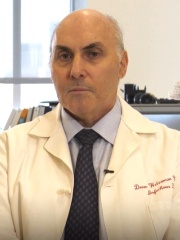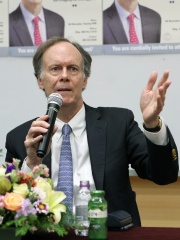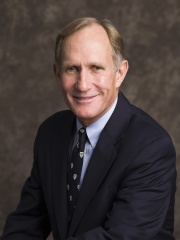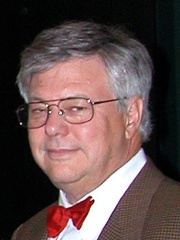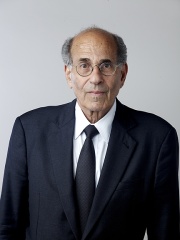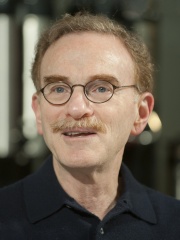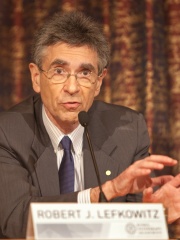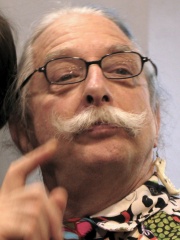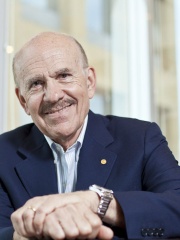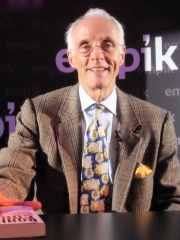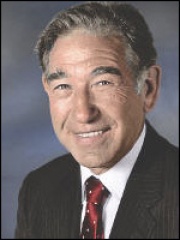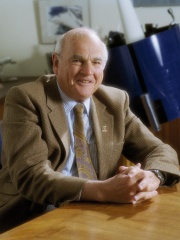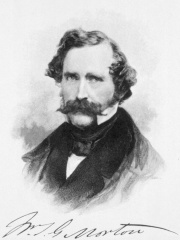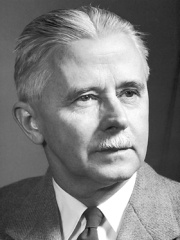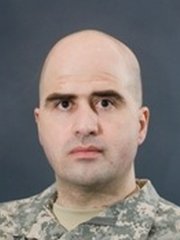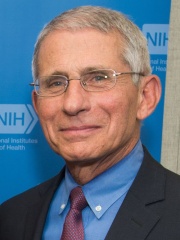
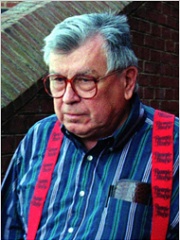
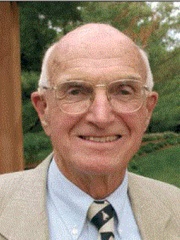
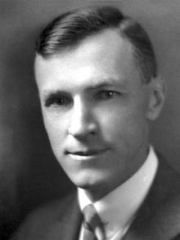
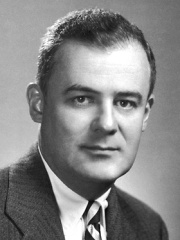
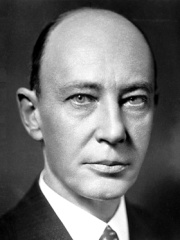
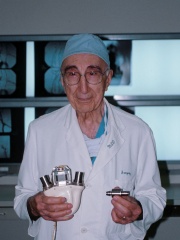
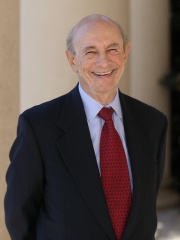
The Most Famous
PHYSICIANS from United States
This page contains a list of the greatest American Physicians. The pantheon dataset contains 726 Physicians, 104 of which were born in United States. This makes United States the birth place of the most number of Physicians.
Top 10
The following people are considered by Pantheon to be the top 10 most legendary American Physicians of all time. This list of famous American Physicians is sorted by HPI (Historical Popularity Index), a metric that aggregates information on a biography's online popularity. Visit the rankings page to view the entire list of American Physicians.

1. Anthony Fauci (b. 1940)
With an HPI of 80.91, Anthony Fauci is the most famous American Physician. His biography has been translated into 54 different languages on wikipedia.
Anthony Stephen Fauci ( FOW-chee; born December 24, 1940) is an American physician-scientist and immunologist who served as the director of the National Institute of Allergy and Infectious Diseases (NIAID) from 1984 to 2022, and the chief medical advisor to the president from 2021 to 2022. Fauci was one of the world's most frequently cited scientists across all scientific journals from 1983 to 2002. In 2008, President George W. Bush awarded him the Presidential Medal of Freedom, the highest civilian award in the United States, for his work on the AIDS relief program PEPFAR. Fauci received his undergraduate education at the College of the Holy Cross and his Doctor of Medicine from Cornell University. As a physician with the National Institutes of Health (NIH), Fauci served the American public health sector for more than fifty years and has acted as an advisor to every U.S. president since Ronald Reagan. During his time as director of the NIAID, he made contributions to HIV/AIDS research and other immunodeficiency diseases, both as a research scientist and as the head of the NIAID. During the COVID-19 pandemic, Fauci served under President Donald Trump as one of the lead members of the White House Coronavirus Task Force. His advice was frequently contradicted by Trump, and Trump's supporters alleged that Fauci was trying to politically undermine Trump's run for reelection. During the Biden administration, Fauci served as one of the lead members of the White House COVID-19 Response Team and as Biden's chief medical advisor.

2. Daniel Carleton Gajdusek (1923 - 2008)
With an HPI of 75.08, Daniel Carleton Gajdusek is the 2nd most famous American Physician. His biography has been translated into 53 different languages.
Daniel Carleton Gajdusek ( GHY-də-shek; September 9, 1923 – December 12, 2008) was an American physician and medical researcher who was the co-recipient (with Baruch S. Blumberg) of the Nobel Prize in Physiology or Medicine in 1976 for work on the transmissibility of kuru, implying the existence of an infectious agent, which he named an 'unconventional virus'. In 1996, Gajdusek was charged with child molestation and, after being convicted, spent 12 months in prison before entering a self-imposed exile in Europe, where he died a decade later. Despite Gajdusek openly admitting to molesting boys and his approval of incest, he still received support from peers advocating for clemency who felt his crimes were lessened by his scientific contributions. His papers are held at the National Library of Medicine in Bethesda, Maryland and at the American Philosophical Society in Philadelphia, Pennsylvania.

3. Joseph Murray (1919 - 2012)
With an HPI of 74.20, Joseph Murray is the 3rd most famous American Physician. His biography has been translated into 53 different languages.
Joseph Edward Murray (April 1, 1919 – November 26, 2012) was an American plastic surgeon who was awarded the Nobel Prize in Physiology or Medicine in 1990 with E. Donnall Thomas for "their discoveries concerning organ and cell transplantation in the treatment of human disease." Murray is known as the "father of transplantation" for major milestones in the field of transplantation, including performing the first successful human kidney transplant, defining brain death, organizing the first international conference on human kidney transplants, and founding the National Kidney Registry, the forerunner of the current United Network of Organ Sharing (UNOS).

4. William P. Murphy (1892 - 1987)
With an HPI of 73.07, William P. Murphy is the 4th most famous American Physician. His biography has been translated into 56 different languages.
William Parry Murphy Sr. (February 6, 1892 – October 9, 1987) was an American physician who shared the Nobel Prize in Physiology or Medicine in 1934 with George Richards Minot and George Hoyt Whipple for their combined work in devising and treating macrocytic anemia (specifically, pernicious anemia).
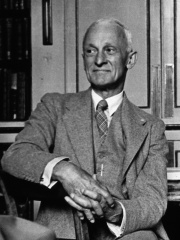
5. Harvey Cushing (1869 - 1939)
With an HPI of 71.99, Harvey Cushing is the 5th most famous American Physician. His biography has been translated into 35 different languages.
Harvey Williams Cushing (April 8, 1869 – October 7, 1939) was an American neurosurgeon, pathologist, writer, and draftsman. A pioneer of brain surgery, he was the first exclusive neurosurgeon and the first person to describe Cushing's disease. He wrote a biography of physician William Osler in three volumes.

6. Frederick Chapman Robbins (1916 - 2003)
With an HPI of 71.92, Frederick Chapman Robbins is the 6th most famous American Physician. His biography has been translated into 54 different languages.
Frederick Chapman Robbins (August 25, 1916 – August 4, 2003) was an American pediatrician and virologist. He was born in Auburn, Alabama, and grew up in Columbia, Missouri, attending David H. Hickman High School. He received the Nobel Prize in Physiology or Medicine in 1954 along with John Franklin Enders and Thomas Huckle Weller, making Robbins the only Nobel laureate born in Alabama. The award was for breakthrough work in isolating and growing the poliovirus in tissue culture, paving the way for vaccines developed by Jonas Salk and Albert Sabin. He attended the University of Missouri and Harvard University. In 1952, he was appointed professor of pediatrics at Case Western Reserve University. Robbins was elected a fellow of the American Academy of Arts and Sciences in 1962. From 1966 to 1980, Robbins was dean of the School of Medicine at Case Western. He was elected to the American Philosophical Society in 1972. In 1980, he assumed the presidency of the National Academy of Sciences' Institute of Medicine. He had been a member of the National Academy of Sciences since 1972. Five years later, in 1985, Robbins returned to Case Western Reserve as dean emeritus and distinguished university professor emeritus. He continued to be a fixture at the medical school until his death in 2003. The medical school's Frederick C. Robbins Society is named in his honor. His wife, Alice N. Robbins, died in 2016. She was the daughter of Nobel laureate John Howard Northrop. Robbins received the Benjamin Franklin Medal for Distinguished Achievement in the Sciences of the American Philosophical Society in 1999.

7. George Minot (1885 - 1950)
With an HPI of 71.60, George Minot is the 7th most famous American Physician. His biography has been translated into 54 different languages.
George Richards Minot ( MY-not; December 2, 1885 – February 25, 1950) was an American medical researcher who shared the 1934 Nobel Prize in Physiology or Medicine with George Hoyt Whipple and William P. Murphy for their pioneering work on pernicious anemia.

8. Michael DeBakey (1908 - 2008)
With an HPI of 71.50, Michael DeBakey is the 8th most famous American Physician. His biography has been translated into 30 different languages.
Michael Ellis DeBakey (September 7, 1908 – July 11, 2008) was an American/Lebanese general and cardiovascular surgeon, scientist and medical educator who became Chairman of the Department of Surgery, President, and Chancellor of Baylor College of Medicine at the Texas Medical Center in Houston, Texas. His career spanned nearly eight decades. Born to Lebanese immigrants, DeBakey was inspired to pursue a career in medicine by the physicians that he had met at his father's drug store, and he simultaneously learned sewing skills from his mother. He subsequently attended Tulane University for his premedical course and Tulane University School of Medicine to study medicine. At Tulane, he developed a version of the roller pump, which he initially used to transfuse blood directly from person to person and which later became a component of the heart–lung machine. Following early surgical training at Charity Hospital, DeBakey was encouraged to complete his surgical fellowships in Europe, before returning to Tulane University in 1937. During World War II, he worked in the Surgical Consultants Division of the Office of the Army Surgeon General, and later was involved in the establishment of the Veterans Administration. DeBakey's surgical innovations included novel procedures to repair aortic aneurysms and dissections, the development of ventricular assist devices, and the introduction of prosthetic vascular substitutes. DeBakey received a number of awards, including the Albert Lasker Award, the Presidential Medal of Freedom, the National Medal of Science, and the Congressional Gold Medal. In addition, a number of institutions bear his name.

9. Harvey J. Alter (b. 1935)
With an HPI of 71.09, Harvey J. Alter is the 9th most famous American Physician. His biography has been translated into 52 different languages.
Harvey James Alter (born September 12, 1935) is an American medical researcher, virologist, physician and Nobel Prize laureate, who is best known for his work that led to the discovery of the hepatitis C virus. Alter is the former chief of the infectious disease section and the associate director for research of the Department of Transfusion Medicine at the Warren Grant Magnuson Clinical Center in the National Institutes of Health (NIH) in Bethesda, Maryland. In the mid-1970s, Alter and his research team demonstrated that most post-transfusion hepatitis cases were not due to hepatitis A or hepatitis B viruses. Working independently, Alter and Edward Tabor, a scientist at the U.S. Food and Drug Administration, proved through transmission studies in chimpanzees that a new form of hepatitis, initially called "non-A, non-B hepatitis" caused the infections, and that the causative agent was probably a virus. This work eventually led to the discovery of the hepatitis C virus in 1988, for which he shared the Nobel Prize in Physiology or Medicine in 2020 along with Michael Houghton and Charles M. Rice. Alter has received recognition for the research leading to the discovery of the virus that causes hepatitis C. He was awarded the Distinguished Service Medal, the highest award conferred to civilians in United States government public health service, and the 2000 Albert Lasker Award for Clinical Medical Research.
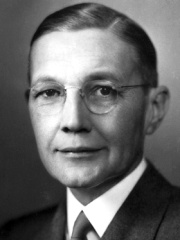
10. Herbert Spencer Gasser (1888 - 1963)
With an HPI of 70.84, Herbert Spencer Gasser is the 10th most famous American Physician. His biography has been translated into 54 different languages.
Herbert Spencer Gasser (July 5, 1888 – May 11, 1963) was an American physiologist, and recipient of the Nobel Prize for Physiology or Medicine in 1944 for his work with action potentials in nerve fibers while on the faculty of Washington University in St. Louis, awarded jointly with Joseph Erlanger.
People
Pantheon has 104 people classified as American physicians born between 1745 and 1985. Of these 104, 34 (32.69%) of them are still alive today. The most famous living American physicians include Anthony Fauci, Harvey J. Alter, and Drew Weissman. The most famous deceased American physicians include Daniel Carleton Gajdusek, Joseph Murray, and William P. Murphy. As of April 2024, 2 new American physicians have been added to Pantheon including Fred Ramsdell, and Nidal Hasan.
Living American Physicians
Go to all RankingsAnthony Fauci
1940 - Present
HPI: 80.91
Harvey J. Alter
1935 - Present
HPI: 71.09
Drew Weissman
1959 - Present
HPI: 69.78
William Kaelin Jr.
1957 - Present
HPI: 69.45
Peter Agre
1949 - Present
HPI: 68.32
Michael Stuart Brown
1941 - Present
HPI: 67.05
Richard Axel
1946 - Present
HPI: 66.64
Randy Schekman
1948 - Present
HPI: 66.58
Robert Lefkowitz
1943 - Present
HPI: 66.32
Patch Adams
1945 - Present
HPI: 66.21
Louis Ignarro
1941 - Present
HPI: 66.12
Robin Cook
1940 - Present
HPI: 65.52
Deceased American Physicians
Go to all RankingsDaniel Carleton Gajdusek
1923 - 2008
HPI: 75.08
Joseph Murray
1919 - 2012
HPI: 74.20
William P. Murphy
1892 - 1987
HPI: 73.07
Harvey Cushing
1869 - 1939
HPI: 71.99
Frederick Chapman Robbins
1916 - 2003
HPI: 71.92
George Minot
1885 - 1950
HPI: 71.60
Michael DeBakey
1908 - 2008
HPI: 71.50
Herbert Spencer Gasser
1888 - 1963
HPI: 70.84
Stanley Cohen
1922 - 2020
HPI: 70.71
Baruch Samuel Blumberg
1925 - 2011
HPI: 70.46
William T. G. Morton
1819 - 1868
HPI: 69.85
Haldan Keffer Hartline
1903 - 1983
HPI: 69.85
Newly Added American Physicians (2025)
Go to all RankingsOverlapping Lives
Which Physicians were alive at the same time? This visualization shows the lifespans of the 25 most globally memorable Physicians since 1700.

